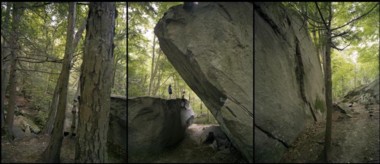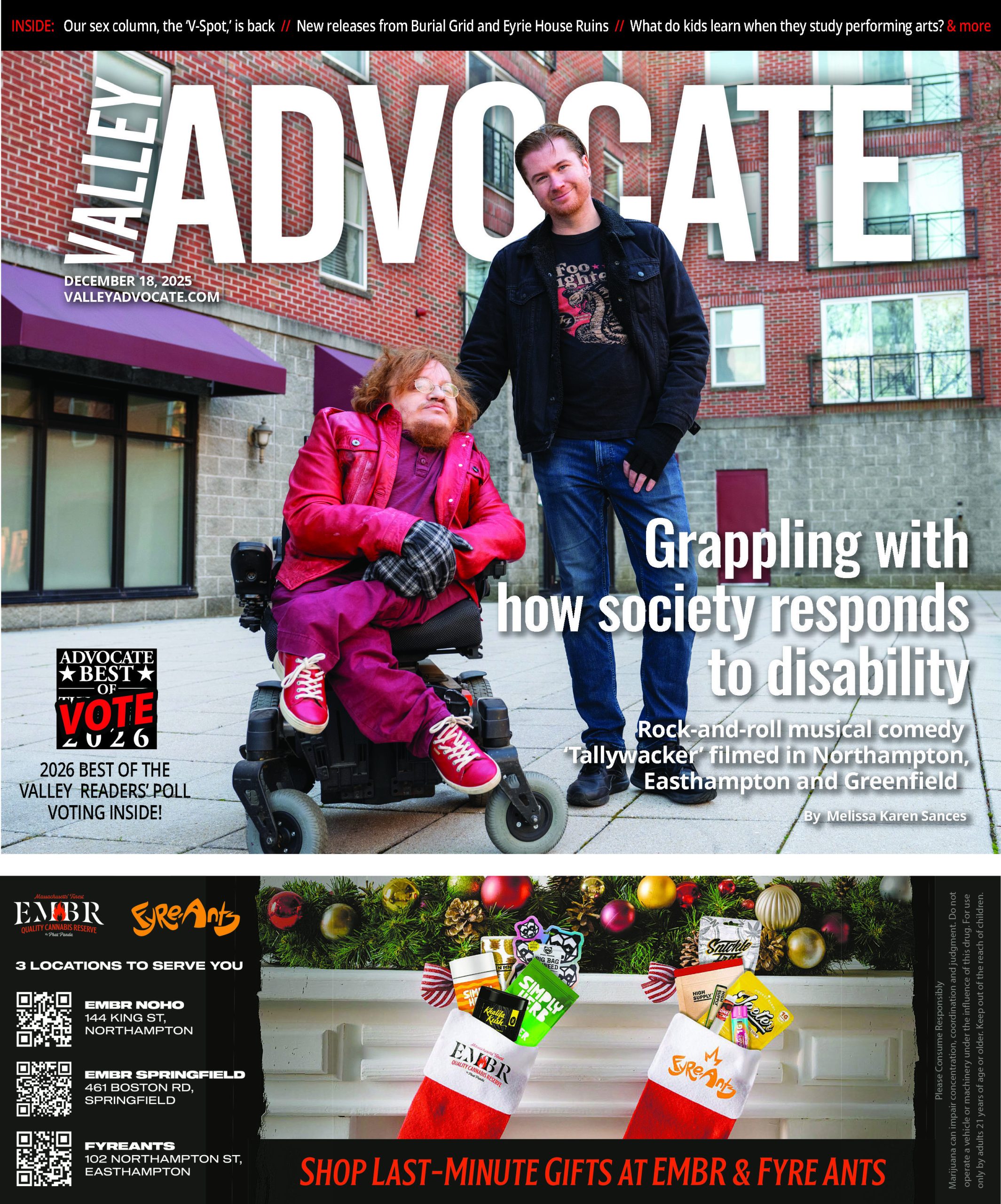“How do you make a photograph on a trail?”
This is the question Barbara Bosworth poses both to herself and to the 30 or so of us in attendance at her recent lunchtime talk at the Mount Holyoke College Art Museum.
“What is a trail?” she ponders. “How do you account for it moving through the landscape?”
The first artist-in-residence of the New England National Scenic Trail (NET), Bosworth spent the summer and fall of 2012 on the 215-mile trail with a large-format camera. The exhibit that grew out of that long hiking adventure, To Be at the Farther Edge: Photographs Along the New England Trail, is showing at the Mount Holyoke College Art Museum through Dec. 17, and at Amherst College’s Mead Art Museum and Beneski Museum of Natural History until Dec. 8.
The exhibit is presented by the National Park Service—which oversees the NET—along with the Appalachian Mountain Club (AMC) and the Connecticut Forest and Park Association. To Be at the Farther Edge is also on display south of the Valley at the New Britain Museum of American Art and the Hartford Art School through the end of November. It also shows at the AMC headquarters in Boston during that time.
Part of the motivation behind the project is to use Bosworth’s trail pieces to inspire a greater cross-section of people who might be interested in the NET, the National Park Service’s Charles Tracy tells me as we settle into our seats. The head of the NET, Tracy was instrumental in putting the exhibit together.
“The trail experience is more than the just the trail,” Tracy says during the Q&A discourse following Bosworth’s talk. “It is the sky, and the weather, and the geology.”
To most effectively capture this fluidity on static film, Bosworth took several photos from the same spots over several seasons and at varying times of day. Her exhibition includes three separate frames of the Oxbow alone.
“I love being in these places,” she explains. “And I can’t really advocate for staying out of them.”
Bosworth stresses that she considers her work “outdoors-based” in the same vein as Robert Adams, as opposed to the “look but don’t touch” sensibilities of “landscape” photographers like Ansel Adams.
“I am more interested in the places where we live, and making them sustainable,” she says, acknowledging that the solution to the problem of how best to accomplish such a thing often isn’t readily apparent.
Working on The Farther Edge took Bosworth on the trail throughout Connecticut and Massachusetts, a journey that included several locations in the Valley: Mount Tom, Mount Holyoke, Goat Peak, Farley Ledges and the Millers River. At these spots she used an 8-by-10 camera and a big box, mounted them on top of a tripod, and balanced them all as best she could. Then she waited. Individual photos often took an hour or two.
“It’s a slow process,” she concedes, noting Robet Frank’s observation that the last thing the world needs is another photograph. “But it’s a different way of seeing. And I love looking at the world through that rectangle.”•



